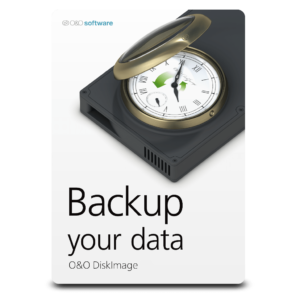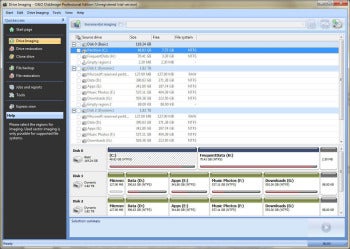

As we’ve mentioned, O&O DiskImage happily supports backups of specific folders and file types: it’s a little irritating (and baffling) that the exclusion filter isn’t available here, but you can optionally apply compression and encryption to keep your data compact and secure.

It probably makes sense, therefore, to create a second, smaller backup set to protect your most important files. In fact, things only get worse if you also have to download a lengthy chain of incremental updates. Download speeds are normally faster, but you’re still looking at an agonising delay if you need to get a borked computer up and running. On domestic broadband with a 10Mbits/sec upstream connection, a 72GB file will take 17h to upload in the very best case.

Replicating our disk image to a NAS inside our home network took around six times as long as over USB 3, and if you want to upload your images over the internet, you can expect a very long wait indeed. This leads us to the key shortcoming of the full-disk approach: it’s not ideal for remote backup. All of this means that a 2TB external drive should be able to accommodate a complete system archive dating back months or even years. If you need to save even more space, you can configure filters to exclude superfluous files and folders – once you’ve made that initial image, you can build incremental backups onto it, so subsequent updates will be far smaller. We tried backing up a Windows system disk containing 141GB of data, and were impressed to see O&O DiskImage Professional squeeze it into a 72GB image file. Inevitably, full-disk backups take up more space than selective ones, but they’re less weighty than you might imagine, as a lot of the files in a Windows installation are highly compressible. Plus, of course, if you’re hit by a malware attack or an OS failure, you can boot into the O&O recovery environment – the program includes a wizard that will write it to a bootable USB flash drive or ISO file – and roll your entire system back to an earlier state. Doing it this way ensures that nothing gets inadvertently missed out of your backup set, while finding and recovering files is a breeze, as your backed-up disk image can be mounted and browsed directly within the Windows Explorer. It’s an approach that encourages you to make regular backups of your entire system, and that’s not a bad idea.


 0 kommentar(er)
0 kommentar(er)
